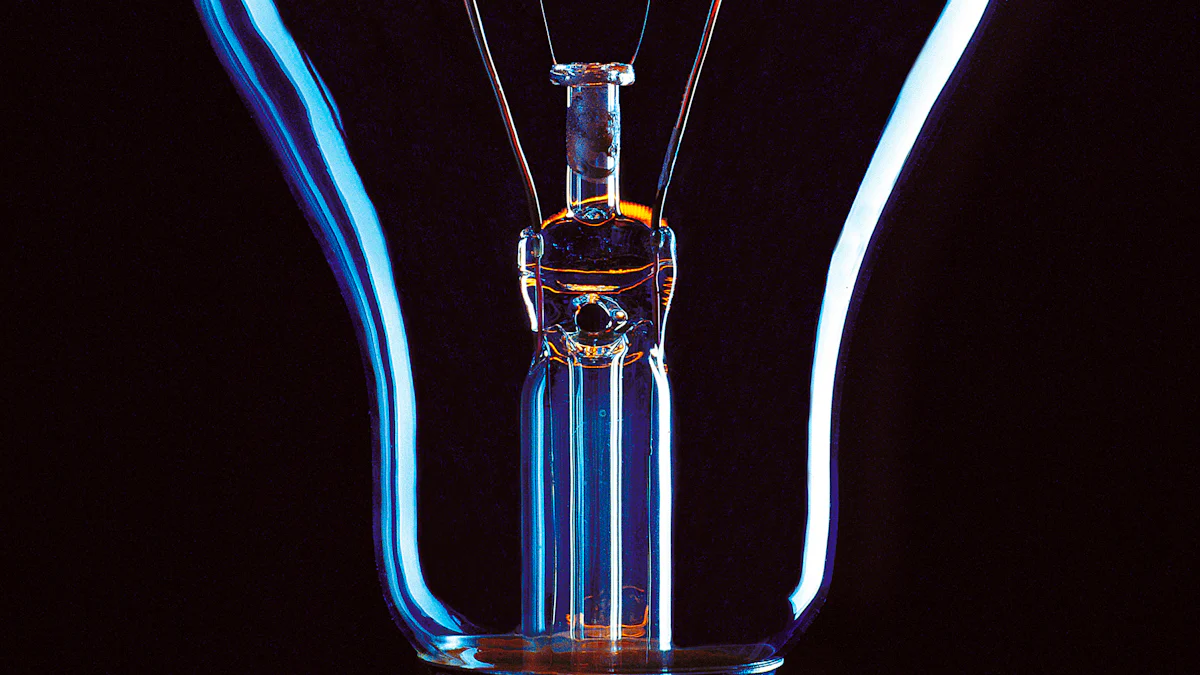Unveiling the 17 Essential Key Concepts of Flashlights

Understanding flashlights is crucial in today's dynamic world. With the market projected to grow at a significant rate, it's essential to grasp the Key Concepts that define these illuminating tools. This blog aims to provide an insightful overview of the 17 fundamental aspects that shape the realm of Flashlights. By delving into these concepts, readers will gain a comprehensive understanding of what makes a flashlight efficient, durable, and versatile.
Key Concepts Overview

Importance of Key Concepts
Enhancing knowledge about Key Concepts is essential for individuals seeking to make informed decisions when selecting a flashlight. By understanding the fundamental principles that govern flashlights, users can optimize their experiences and ensure they meet their specific needs effectively.
Making informed choices based on these Key Concepts empowers consumers to select flashlights that align with their requirements accurately. Whether it's for everyday tasks or professional use, a thorough grasp of these concepts enables individuals to choose the most suitable flashlight for their intended purpose.
Flashlights in Daily Life
In daily life, Flashlights play a crucial role in various scenarios, from mundane activities to critical situations. Understanding how flashlights can enhance everyday tasks and support professionals in their work sheds light on the significance of these illuminating tools.
For everyday tasks, having a reliable flashlight can simplify chores and activities that require adequate lighting. Whether it's navigating through dark spaces, locating items in dimly lit areas, or addressing power outages, a quality flashlight ensures efficiency and convenience.
In professional settings, such as law enforcement, security services, or emergency response teams, flashlights are indispensable tools. They provide illumination during nighttime operations, search and rescue missions, or inspections in low-light environments. The reliability and performance of flashlights in these contexts can be a matter of safety and efficiency.
Detailed Concepts

Lumens
Definition
Lumens, a crucial metric in flashlight technology, quantify the total amount of visible light emitted by a flashlight or headlamp. This measurement determines how bright the light appears to the human eye. For instance, 1 lumen is equivalent to the light of a full moon, while 13 lumens resemble candlelight. Understanding lumens helps users gauge the brightness level of a flashlight accurately.
Importance
The number of lumens in a flashlight provides valuable insights into its luminosity potential. While higher lumens indicate brighter output, it's essential to consider that optics within the flashlight influence both range and brightness. For example, 450 lumens can be likened to a 40-watt lightbulb, offering ample illumination for various tasks. By comprehending lumens, individuals can make informed decisions when selecting flashlights tailored to their specific needs.
Beam Types
Spotlights
Spotlights emit a focused beam of light ideal for illuminating distant objects or specific areas with precision. These flashlights are suitable for activities like camping, hiking, or search missions where long-range visibility is crucial.
Floodlights
In contrast, floodlights disperse light over a wide area, making them perfect for illuminating larger spaces or providing ambient lighting during outdoor gatherings or emergencies.
Adjustable Beams
Flashlights with adjustable beams offer versatility by allowing users to switch between spotlight and floodlight modes based on their requirements. This adaptability ensures optimal illumination in various scenarios and enhances user experience significantly.
Color Temperature
Definition
Color temperature refers to the appearance of light emitted by a flashlight and is measured in Kelvin (K). Understanding color temperature aids consumers in selecting flashlights that produce their preferred type of light – whether warm white for cozy environments or cool white for enhanced visibility outdoors. By considering color temperature preferences, individuals can personalize their lighting experiences and tailor them to specific settings effectively.
Beam Control
Shape Control
Flashlights offer various options for controlling the shape of their beams, allowing users to customize the light output based on their needs. By adjusting the beam shape, individuals can focus the light for specific tasks or broaden it to illuminate larger areas effectively. This feature enhances the versatility of flashlights and ensures optimal performance in different scenarios.
Application-Specific Control
Flashlights with application-specific control settings cater to specialized needs, such as tactical operations, outdoor activities, or emergency situations. These settings enable users to tailor the flashlight's beam characteristics to suit specific environments or tasks. Whether it's adjusting for long-distance visibility during camping trips or enhancing close-range illumination for indoor use, application-specific control enhances user experience and ensures efficient lighting solutions.
Battery Types
Disposable Batteries
Flashlights powered by disposable batteries offer convenience and flexibility for users who require immediate power sources without relying on recharging options. These batteries are easily replaceable, making them ideal for situations where access to electricity may be limited. Additionally, disposable batteries provide a reliable energy source for extended periods, ensuring continuous operation when needed.
Rechargeable Batteries
On the other hand, flashlights equipped with rechargeable batteries present a sustainable and cost-effective solution for long-term use. Rechargeable batteries reduce waste generated by disposable options and offer environmentally friendly power alternatives. With the ability to recharge these batteries multiple times, users benefit from consistent performance while minimizing their ecological footprint.
Durability
Water Resistance
Water-resistant flashlights are designed to withstand exposure to moisture or water ingress, making them suitable for outdoor activities or inclement weather conditions. This feature ensures that the flashlight remains operational even in wet environments, providing reliability and functionality when needed most.
Impact Resistance
Flashlights built with impact-resistant materials can endure accidental drops or rough handling without compromising their performance. The durability of these flashlights makes them ideal for demanding situations where ruggedness is essential. By withstanding impacts and shocks, these flashlights maintain their functionality and reliability in challenging environments.
Size and Weight
Portability
Flashlights come in various sizes, from compact models that fit in your pocket to larger ones suitable for professional use. The portability of a flashlight is crucial for individuals on the go, ensuring they can carry it effortlessly wherever they venture. A lightweight design enhances user comfort during extended use, making it convenient for outdoor activities or emergency situations.
Ergonomics
The ergonomic design of a flashlight focuses on enhancing user comfort and usability. Factors such as grip texture, button placement, and overall handling impact how comfortable a flashlight is to use. An ergonomic flashlight fits comfortably in the hand, reducing fatigue during prolonged use and providing a secure grip in challenging conditions. By prioritizing ergonomics, manufacturers aim to create flashlights that are intuitive to operate and comfortable to hold for extended periods.
Modes and Settings
High and Low Modes
Flashlights often feature multiple modes to adjust brightness levels based on specific needs. High modes provide maximum illumination for tasks requiring intense light output, while low modes conserve battery life and offer subtle lighting options. Switching between high and low modes allows users to adapt the flashlight's brightness to different environments effectively.
Strobe and SOS Modes
In addition to standard lighting modes, some flashlights include strobe and SOS settings for emergency situations. The strobe mode produces rapid flashes of light, disorienting potential threats or signaling distress. On the other hand, the SOS mode emits an internationally recognized distress signal in Morse code, aiding individuals in alerting others during emergencies. These specialized modes enhance the versatility of flashlights by providing essential features for unforeseen circumstances.
Lens and Reflectors
Lens Types
The type of lens used in a flashlight influences light transmission efficiency and beam quality. Different lens materials can affect factors such as focus, diffusion, or color rendering properties. Understanding lens types helps users select flashlights that meet their specific lighting requirements accurately.
Reflector Types
Reflectors play a crucial role in shaping the beam pattern emitted by a flashlight. Smooth reflectors produce focused beams ideal for long-distance illumination, while textured or orange peel reflectors offer more diffused lighting suitable for close-range tasks. By choosing the appropriate reflector type, users can optimize their lighting experience based on intended applications effectively.
Material and Build Quality
Aluminum
Aluminum is a popular choice for flashlight construction due to its lightweight yet durable properties. Flashlights crafted from aluminum offer a balance between strength and portability, making them ideal for various applications. The material's corrosion resistance ensures longevity, even in challenging environments. Aluminum flashlights are known for their robust build quality, providing users with reliable illumination solutions that withstand daily wear and tear.
Plastic
Plastic flashlights are lightweight and cost-effective options suitable for casual use or as backup lighting sources. While not as durable as metal counterparts, plastic flashlights offer affordability and versatility in design. These flashlights are often compact and easy to carry, making them convenient for everyday tasks or emergencies where portability is essential. Plastic construction allows for a range of colors and styles, catering to diverse consumer preferences while maintaining an accessible price point.
Warranty and Support
Warranty Types
Flashlights come with various warranty options that provide consumers with assurance and protection against potential defects or malfunctions. Understanding the different Warranty Types offered by manufacturers is crucial when investing in a quality flashlight.
Limited Warranty: Manufacturers offer a limited warranty that covers specific components or parts of the flashlight for a defined period. This type of warranty ensures that any defects arising from faulty materials or workmanship are repaired or replaced by the manufacturer.
Lifetime Warranty: Some flashlights boast a lifetime warranty, guaranteeing long-term support and maintenance for the product. This comprehensive warranty demonstrates the manufacturer's confidence in the flashlight's durability and performance over an extended period.
Extended Warranty: Consumers can opt for an extended warranty to prolong coverage beyond the standard terms provided by the manufacturer. This additional protection offers peace of mind and ensures continued support for the flashlight, even after the initial warranty expires.
Customer Support
Customer support plays a vital role in enhancing the overall user experience with flashlights. Reliable Customer Support services ensure that consumers receive assistance, guidance, and solutions to any queries or issues they may encounter during product use.
Technical Assistance: Customer support teams offer technical guidance on operating, troubleshooting, or optimizing flashlight performance. By providing expert advice and solutions, users can maximize their flashlight's capabilities effectively.
Product Queries: Customers can reach out to customer support for inquiries regarding product specifications, features, or compatibility. Prompt responses and accurate information enable users to make informed decisions and select flashlights that meet their requirements accurately.
Issue Resolution: In case of malfunctions, defects, or concerns with the flashlight, customer support facilitates swift issue resolution through repairs, replacements, or troubleshooting steps. Timely assistance ensures minimal downtime and maintains user satisfaction with the product.
By understanding Warranty Types and leveraging robust Customer Support services, consumers can confidently choose high-quality flashlights backed by reliable warranties and responsive assistance channels.
Environmental Impact
Flashlights have evolved to offer environmentally conscious choices, aligning with the growing demand for sustainable solutions. Eco-friendly options integrate renewable energy sources, such as solar-powered batteries or hand-crank mechanisms, reducing reliance on disposable batteries and minimizing ecological impact. By utilizing innovative technologies, manufacturers strive to create flashlights that promote energy efficiency and environmental stewardship.
To further enhance sustainability, some flashlights feature recyclable materials in their construction, ensuring minimal environmental footprint throughout their lifecycle. By opting for Eco-friendly options, users contribute to conservation efforts and support eco-conscious practices within the flashlight industry.
Disposal Methods
Proper disposal of flashlights is essential to prevent environmental harm and promote responsible waste management. When retiring old or non-functional flashlights, users should adhere to recycling guidelines to ensure components are safely processed and reused whenever possible. Many flashlight manufacturers offer take-back programs or recycling initiatives to facilitate the proper disposal of outdated devices.
By following recommended Disposal Methods, individuals can reduce electronic waste accumulation and contribute to a cleaner environment. Responsible disposal practices safeguard natural resources and mitigate pollution risks associated with improper flashlight disposal.
Future Trends
Technological Advancements
The future of flashlights is poised for remarkable advancements driven by cutting-edge technologies. Emerging trends focus on enhancing performance, efficiency, and user experience through innovations like smart connectivity, advanced optics, and energy-saving features. Technological Advancements aim to revolutionize how individuals interact with flashlights, offering intuitive controls, enhanced durability, and tailored lighting solutions for diverse applications.
As technology continues to evolve rapidly, upcoming flashlight models may incorporate intelligent functions such as motion sensors, adaptive brightness settings, or integrated charging capabilities. These advancements not only elevate the functionality of flashlights but also pave the way for interconnected lighting systems that cater to modern lifestyle needs effectively.
Market Predictions
The flashlight market is projected to witness significant growth fueled by consumer demand for versatile lighting solutions across various sectors. Market Predictions indicate a surge in compact yet powerful flashlight designs catering to outdoor enthusiasts, emergency responders, and everyday users seeking reliable illumination tools. As consumer preferences shift towards sustainable products and multifunctional features, manufacturers are expected to introduce innovative offerings that balance performance with eco-conscious design principles.
Furthermore, market analysts anticipate an increase in customizable flashlight options tailored to specific activities such as camping, hiking, or professional use cases. The competitive landscape is set to expand with new entrants introducing disruptive technologies that redefine traditional notions of flashlight functionality and design aesthetics.
Recapping the 17 Key Concepts of Flashlights illuminates the essential elements that define these versatile tools. Understanding the significance of each concept empowers users to make informed decisions when selecting a flashlight tailored to their specific needs. Choosing the right flashlight ensures optimal performance and functionality across various scenarios, from everyday tasks to professional applications. Encouraging the application of this knowledge enhances user experiences and fosters a deeper appreciation for the role flashlights play in providing illumination and security.
2024/6/5
See Also
Exploring Various Flashlight Varieties
Key Guidelines for Flashlight Care
Significance of Hunting Lights for Outdoor Adventurers
